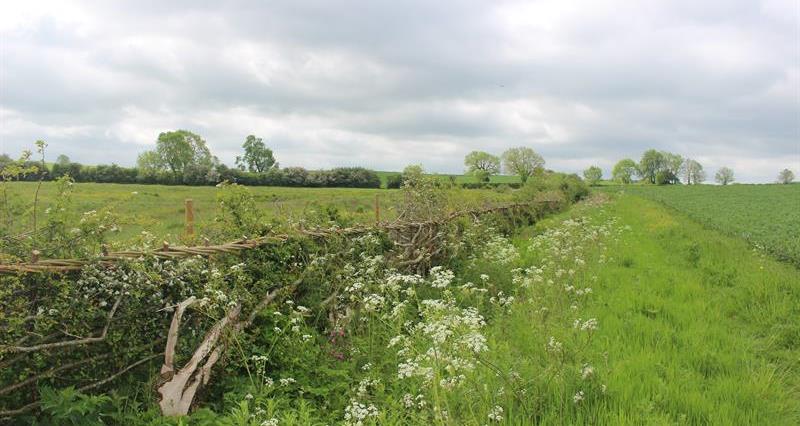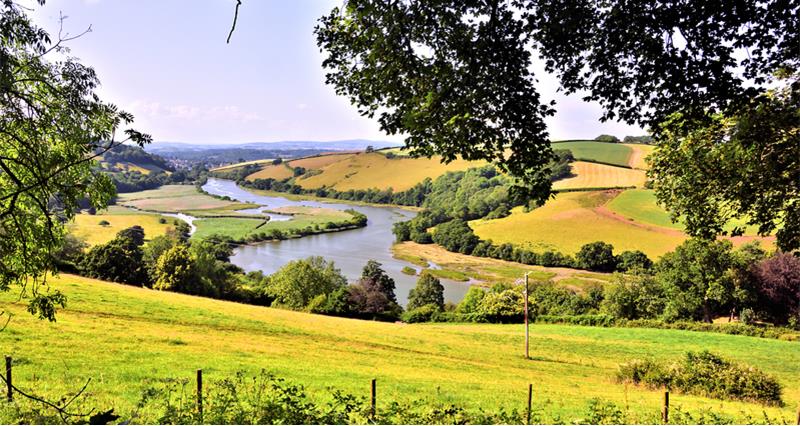SFI actions
We have split the SFI actions aimed at improving water quality into three categories based around what farm or land type they apply to:
Both arable and grassland
There is a real mix of actions here that apply to fields used for both arable purposes and grasslands, from pond and ditch management to nutrient applications and soil testing (see table 1).
Soil management plan and soil organic matter testing
Assess soil, produce a soil management plan and test soil organic matter. CSAM1 helps you identify areas at risk of runoff, soil erosion, and soil compaction – all of which are relevant to water quality.
The waterbody actions (codes start with WBD) require risk of runoff and erosion to be identified, and this plan can be used to identify the risk.
SOM (Soil organic matter) levels are relevant to how much water the land can hold. For each field entered into this action, you need to have had a SOM test in the past five years. If you’ve not got done this, you need to obtain a SOM test in the first year of the agreement and tests then need to be kept up to date throughout the agreement – they must be no older than five years.
Nutrient management plan
The nutrient management plan (CNUM1) requires you to evaluate your current approach to nutrient usage and successfully plan how to manage nutrient usage more efficiently and effectively, and enhance your use of organic sources of crop nutrition.
Good nutrient management has benefits for the bottom line as well as for water quality. This action requires you to have the input of a FACTS-qualified adviser to help you optimise your nutrients.
Precision farming
Two actions, (PRF1 and PRF2), require the use of precision farming equipment to apply either nutrients or herbicides. The aim is to reduce the over-application of the product being applied, therefore reducing the potential of runoff into water bodies and saving you money.
Pond management
The aim here is to ensure there are ponds containing clear and clean water with a range of semi-aquatic vegetation allowed to develop around the edge.
| Code | SFI action | Payment per hectare |
| CSAM1 | Assess soil, produce a soil management plan and test soil organic matter. | £6 per hectare per year and £97 per SFI agreement per year. |
| CNUM1 | Assess nutrient management and produce a review report. | £652 for assessment and report per year. |
| PRF1 | Variable rate application of nutrients. | £27 |
| PRF2 | Camera or remote sensor guided herbicide spraying. | £43 |
| BFS6 | 6m to 12m habitat strip next to watercourses. | £742 |
| WBD1 | Manage ponds, maximum of 3 per hectare. | £257 per pond per year. |
Table 1: SFI options that apply to both arable and grassland fields aimed at improving water quality.
Arable
There are a number of SFI actions on arable land, including temporary grassland, that help improve water quality through protecting the soil surface, minimising its disturbance, and improving soil structure and composition (see table 2).
These changes can all help lower soil and nutrient loss from fields into water bodies.
Cover crops
Cover cropping protects the soil with green cover, reducing surface runoff to the benefit of water quality. With cover cropping, you need to think about how it could fit into your rotation.
SFI has multi-species cover crop actions for winter, spring and summer. There is also an action to provide green cover after maize (SOH4), which may require the earlier harvesting of maize to establish the cover before winter.
No-till
No-till farming is exactly as it sounds – the adoption of no-tillage farming techniques. This action aims to minimise soil disturbance, benefiting soil heath, fertility, structure, water storage and surface runoff.
Arable reversion
The arable reversion to grassland action (WBD4) involves creating a grass sward throughout the year with low fertiliser inputs.
The aim is to have minimal bare ground to protect the soil from the elements. The action is targeted at areas at risk of soil erosion or runoff, as identified in the soil management plan action above (CSAM1). The seed mix must have at least 5 grass species.
The aim of nil fertiliser supplement action (WBD9) is exactly that – no fertilisers or manures to be applied on arable land or permanent grassland.
As this is a supplemental action, it can only be done on eligible land that’s been put into either WBD4 or WBD5. The purpose is to lower the potential loss of nitrate to ground and surface water.
Grass and buffer strips
In-field grass strips and buffer strips adjacent to watercourses aim to lower the amount of sediment, nutrients and pesticides transported into water bodies via surface runoff, as well as provide habitats for wildlife.
This is done through establishing and maintaining a grass strip which has an intact grass sward, and shows no evidence of damage from vehicle or stock access routes.
| Code | SFI action | Payment per hectare |
| SOH3 | Multi-species summer-sown cover crop. | £163 |
| SOH2 | Multi-species spring-sown cover crop. | £163 |
| CSAM2 | Multi-species winter cover crop. | £129 |
| SOH4 | Winter cover following maize crops. | £203 |
| OFA6 | Undersown cereal crop (organic land). | £380 |
| CIPM4 | No use of insecticide on arable crops and permanent crops. | £45 |
| SOH1 | No-till farming. | £73 |
| CNUM3 | Legume fallow | £593 |
| WBD4 | Arable reversion to grassland with low fertiliser input. | £489 |
| WBD9 | Nil fertiliser supplement (supplement to WBD4). | £155 |
| CAHL4 | 4m to 12m grass buffer strip on arable and horticultural land. | £515 |
| BFS1 | 12m to 24m watercourse buffer strip on cultivated land. | £707 |
| BFS2 | Buffer in-field ponds on arable land. | £681 |
Table 2: Arable SFI options aimed at improving water quality.
Grassland
Within the grassland-specific actions, there are targeted actions for highly productive grassland to improve water quality (table 3).
Herbal leys and legumes
Herbal (CSAM3) and legumes leys (CNUM2) provide a varied root structure, which is a good way of improving soil structure. They also include legumes, reducing your need for fertiliser or manures.
You get more benefit the longer you leave it in place, but you don’t have to keep it in the same location throughout the agreement.
Grassland next to watercourses
All the waterbody (WBD) actions here aim to create diverse grass swards on land which is adjacent to/drains into a watercourse.
This is done to lower surface runoff and risk of diffuse pollution to watercourses, and help reduce the risk of flooding. They restrict nutrients through stock removal or limited applications.
Reducing nutrient inputs and levels
The aim of grassland management with very low/to reduce nutrient levels (CLIG3, WBD8) is exactly as they say on the tin – to lower nutrient inputs to grassland and help limit nutrient levels in groundwater.
In both actions, an intact sward must be present throughout the year to reduce soil exposure to the elements.
Grassland field corners and blocks
The purpose of taking grassland field corners or blocks out of management (CILG1) is so that tussocky grass can develop, thereby providing a buffer to catch field runoff and provide a habitat for wildlife.
| Code | SFI action | Payment per hectare |
| CSAM3 | Herbal leys. | £382 |
| CNUM2 | Legumes on improved grassland. | £102 |
| WBD5 | Manage intensive grassland adjacent to a watercourse. | £311 |
| WBD9 | Nil fertiliser supplement (supplement to WBD5). | £156 |
| WBD6 | Remove livestock from intensive grassland during the autumn and winter (outside SDAs). | £115 |
| WBD7 | Remove livestock from grassland during the autumn and winter (SDAs). | £115 |
| CLIG3 | Manage grassland with very low nutrient inputs. | £151 |
| WBD8 | Manage grassland to reduce nutrient levels in groundwater. | £396 |
| CILG1 | Take grassland field corners or blocks out of management. | £333 |
| CLIG3 | 4m to 12m grass buffer strip on improved grassland | £235 |
| BFS3 | Buffer in-field ponds on improved grassland. | £311 |
Table 3: Grassland SFI options aimed at improving water quality.
The wider offer
Across SFI there are other actions that support the improvement of water quality.
For example, maintaining or establishing hedgerow trees (CHRW3) can improve water quality by trapping sediment, nutrients and pollutants before it reaches a watercourse. They also benefit soil structure. This is just one example.
Please see the NFU’s Farming Investment Fund schemes page and water quality pages for further information on additional funding and guidance available to help you improve water quality on your farm.


